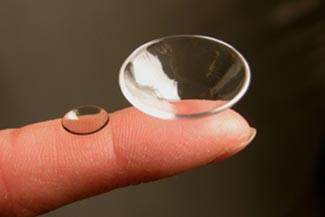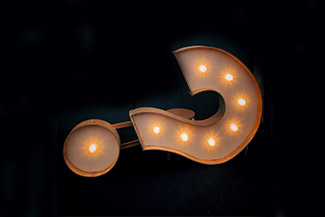
Keratoconus Patients Can Avoid Corneal Surgery With Scleral Lenses
All surgical procedures come with risks, which is why they are usually prescribed as a last resort after trying other interventions.
This is equally true for keratoconus—an eye disease that causes the cornea to become misshapen. Although corneal surgery is generally safe, it can at times lead to complications like infection, permanent corneal scarring, transplant rejection and corneal haze.
Research has shown that patients with severe keratoconus who wear scleral lenses significantly reduce their need for corneal surgery.
Below, we’ll cover the ins and outs of keratoconus and explain how scleral lenses can safely and effectively manage the condition.
What is Keratoconus?
Keratoconus affects approximately 0.05-0.25% of the global population. It is a progressive eye condition that causes the cornea to thin and become cone-like in shape, affecting how light enters the eye. It usually affects both eyes but may lead to differing vision in each eye if a single eye is affected.
Symptoms of keratoconus include:
- Blurred or distorted vision
- Increasing sensitivity to light or glare
- Red or swollen eyes
- Increasing nearsightedness or astigmatism
- Frequent changes in lens prescription
- The inability to wear standard soft contact lenses
The exact cause of keratoconus isn’t well understood, but risk factors for developing the disease include genetics, oxidative damage, eye rubbing and certain health conditions like allergies, asthma, Down syndrome and retinitis pigmentosa.
In the early stages of keratoconus, soft contact lenses or glasses may be enough to successfully correct vision. But over time, the cornea becomes so misshapen that these methods are no longer effective. Surgical procedures performed on keratoconus patients include corneal cross-linking, refractive surgery and keratoplasty (corneal transplant).
What are Scleral Lenses?
Scleral lenses have a larger diameter than standard soft lenses and cover most of the sclera (the white part of the eye).
Because they don’t put any pressure on the cornea or sclera, they are very comfortable to wear—even for patients with corneal disease. The lens prevents the bulging cornea from rubbing against the eyelid and protects it from environmental irritants.
The space between the scleral lens and the eye is filled with a nourishing liquid that allows oxygen to reach the eye while keeping it hydrated. It also acts as an artificial cornea that helps focus light into the eye, providing sharp and clear eyesight.
Scleral lenses are tailor-made for each eye to ensure the patient achieves the best vision possible.
How Scleral Lenses Can Reduce the Need for Corneal Surgery
In a study involving 51 eyes with severe keratoconus, 40 of them were able to avoid surgery by wearing scleral lenses. While all patients in the study were candidates for corneal transplants, scleral lenses cut the need for keratoplasty by more than half over a 5-year span.
In fact, the study found that managing stage 4 keratoconus with scleral lenses was more effective and safer than keratoplasty.
The features of scleral lenses are ideal for keratoconus patients in several ways. Because they don’t touch the cornea, the rate of scar formation slows down and the cornea isn’t irritated. Moreover, scleral lenses are very stable and fit securely to the eye’s surface. This prevents them from moving around with each blink (as standard lenses do), making them much more gentle on the patient’s sensitive eyes.
If your or a loved one has been diagnosed with keratoconus or is experiencing any of the associated symptoms, we can help. A consultation with Dr. Arkady Selenow will help determine the best-suited treatment for your eyes.
Schedule an appointment by calling one of our friendly staff members at Manhattan Vision Associates today.
Our practice serves patients from Manhattan, Queens, Brooklyn, and the Bronx, New York and surrounding communities.






